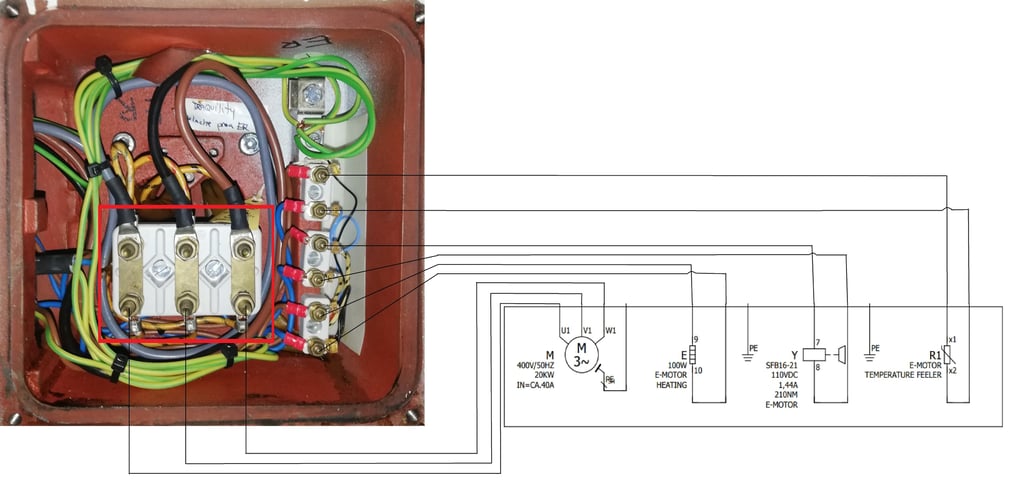Performing insulation resistance (Megger) test on an electric motor


How to perform an insulation resistance test on a 3-phase asynchronous motor rated at 400VAC?
- Inform Bridge/Engine Officers.
- Lock out / tag out breaker.
- Try to run motor to verify if it’s really isolated.
- Open motor’s terminal box and test for presence of AC and DC voltage between phases and phases and ground. Why DC if motor runs on AC? Because the motor can be run by a VFD and to check if the VFD is discharged, you need to test DC voltage.
- Check temperature with a probe; insert the probe through the opening where the winding cables are passing from the terminal box to the windings. Aim is to get the probe in as far as possible and obtain windings temperature readings.
- Make sure motor windings are above dew point; dew point is temperature at or below which moisture in air turns into water. If you suspect there is moisture turning into water inside the windings, you should dry out motor. Consult with manufacturer on the best way to do it.
- Don’t disconnect any terminals.
- Test insulation resistance tester by connecting it to 2 different ground points, it should show no resistance (0Ω).
- Then connect one probe of the insulation resistance tester to the ground and other to any of the phases.
- Apply 500VDC for 60 seconds.
- Resistance should be rising steadily throughout the whole 60 seconds. If it's not, you got a problem with the insulation.
- Make the insulation resistance reading at 60s mark.
- Correct the reading to 40°C and this is your insulation resistance result.
- Minimum value for this motor at 40C, according to the IEEE Std 43-2000, is 5MΩ.
- Discharge motor 4-5 times longer than it was tested by connecting the phases to the ground through some nice current limiting resistor. If you can’t find resistor, hell, just short it 😊
- Test periodically. How often, I can’t tell you. Maybe every 6 months if there is no problem with the motor and it is running in nice conditions. Test more often if you obtain low insulation resistance.
- When testing periodically, always use same testing instrument (if possible), same voltage, same thermometer. Try to test at the same temperature and humidity. Correct the readings to 40°C. If there is a downward trend in readings, see if the motor is getting contaminated or wet or running too hot.
Tell me what is wrong with this procedure and, most importantly, WHY it is wrong.
Looking forward to your comments!